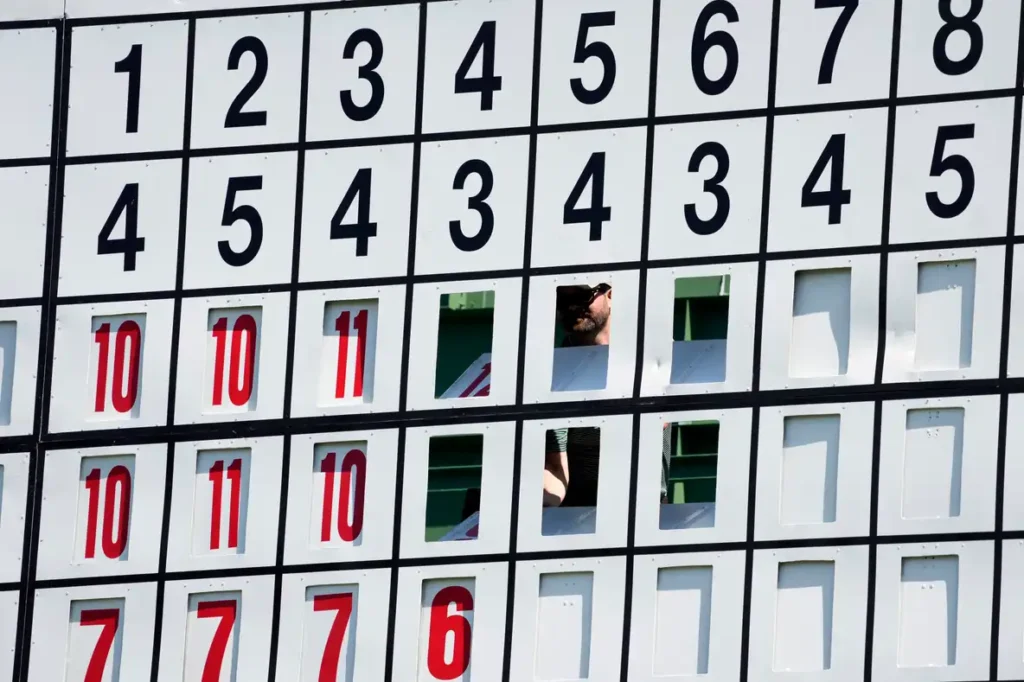Everything You Need to Know About the Masters Playoff Format, Rules, and History as McIlroy and Rose Fight for the Green Jacket
AUGUSTA, Ga. — The 2025 Masters Tournament delivered a heart-pounding finale as Rory McIlroy and Justin Rose ended 72 holes tied at 11-under, forcing a sudden-death playoff to decide who claims the coveted green jacket. With the golf world on edge, fans are buzzing about the Masters playoff format, its nail-biting rules, and the iconic holes that could crown a champion. From the Masters tiebreaker to the sudden-death playoff drama, here’s a deep dive into how the Masters playoff works, the playoff holes at Augusta, and why this year’s finish is one for the history books.
What Happens If There’s a Tie at the Masters?
When the leaderboard shows a tie after four rounds at Augusta National, the Masters playoff kicks in to settle the score. Unlike other majors with aggregate playoff formats, the Masters opts for a sudden-death playoff, a high-stakes showdown where the first player to win a hole outright claims victory. This Masters tiebreaker ensures no shared titles—only one golfer walks away with the green jacket.
The Masters playoff rules are straightforward but intense: players tied after 72 holes head to specific playoff holes at Augusta—the 18th (Holly) and 10th (Camellia)—alternating until a winner emerges. This format, known as the Masters sudden-death rules, has been in place since 1976, replacing earlier 18-hole and 36-hole playoffs used in the tournament’s infancy.

Masters Playoff Holes: The 18th and 10th Under Pressure
The Masters playoff hole order begins with the par-4 18th, a 465-yard beast that demands precision under Augusta’s towering pines. If no one secures the win, players move to the par-4 10th, a 495-yard downhill challenge ranked as the course’s toughest hole historically. These Masters extra holes test every facet of a golfer’s game—driving accuracy, approach shots, and putting nerves. If still tied, the rotation flips back to the 18th, then the 10th again, continuing until someone falters.
The Augusta 18th hole is no stranger to drama. In 2025, McIlroy’s bogey on 18—a missed six-foot par putt—opened the door for Rose, who sank a stunning 25-foot birdie to force the playoff at the Masters. The 10th, meanwhile, carries its own lore, famously where McIlroy’s 2011 collapse began. These playoff holes in the Masters are designed to separate contenders from pretenders.
How Does the Masters Playoff Work?
So, how does a playoff work at the Masters? It’s simple yet brutal: the Masters sudden-death playoff pits tied players head-to-head, with the lowest score on a playoff hole ending the tournament. If multiple players tie, they all continue to the next hole. This playoff format for the Masters maximizes tension, as every shot could be the last. Unlike PGA Tour events that might use aggregate scores, the Masters overtime rules demand a single moment of brilliance—or a rival’s mistake.
The Masters playoff history is rich with unforgettable moments. Since the sudden-death format began, there have been 10 playoffs, with the last in 2017 when Sergio Garcia outlasted Justin Rose on the first extra hole with a birdie. The 2025 showdown marks the first Masters playoff since then, reigniting questions like how many playoff holes in the Masters (as many as it takes) and when was the last Masters playoff (now a fresh memory).
Masters 2025 Playoff: McIlroy vs. Rose
The Masters 2025 playoff unfolded with Rory McIlroy, chasing the career Grand Slam, facing Justin Rose, a major champion hungry for his first Masters title. McIlroy entered Sunday with a two-shot lead over Bryson DeChambeau but stumbled early, carding a double bogey on the first. Rose, meanwhile, surged late, climbing the leaderboard with clutch birdies. By the 18th, McIlroy held a one-stroke edge but found the bunker, setting up his critical miss. Rose’s birdie leveled the score, sending them to the Masters play off.
As the playoff in the Masters began, all eyes were on the Masters playoff holes. McIlroy and Rose teed off on 18, each knowing a single shot could define their legacy. The Masters tie rules left no room for error, and with DeChambeau fading earlier after a rough final round, the stage was set for a two-man duel. Fans wondered, is the Masters playoff sudden death? The answer was clear as the pressure mounted.

Why the Masters Playoff Format Stands Out
The Masters golf playoff format is unique among majors. The PGA Championship uses a three-hole aggregate playoff, the U.S. Open a two-hole aggregate, and the Open Championship a four-hole aggregate. But the Masters sudden-death playoff is pure adrenaline, offering no safety net. This playoff format Masters style has created legends, from Fuzzy Zoeller’s 1979 win to Adam Scott’s 2013 triumph. It’s why fans ask, what is the playoff format at the Masters? It’s golf at its most raw.
The Masters tiebreaker rules also contrast with other golf playoff rules. While some tournaments allow ties to stand, Augusta demands a champion. How does a golf playoff work elsewhere? Often with more holes and less immediacy. At the Masters, the playoff rules for the Masters ensure a swift, dramatic resolution, making what happens if there’s a tie at the Masters a question with a thrilling answer.
What’s Next for the Masters Playoff?
As McIlroy and Rose battle in the Masters 2025 playoff, the outcome will add another chapter to Augusta’s storied history. Will McIlroy finally complete the Grand Slam, or will Rose steal the spotlight? The Masters playoff rule—win or go home—guarantees a defining moment. With the playoff holes Masters layout testing their mettle, one thing is certain: this Masters overtime will be talked about for years.
For those asking, when is the Masters playoff or how many holes in a Masters playoff? It’s happening now, and it lasts until someone stands alone. The last playoff at the Masters in 2017 feels like a distant memory as 2025 delivers fresh drama. Stay tuned as we answer what is the Masters playoff with every swing at Augusta National.